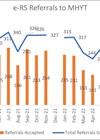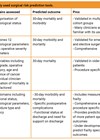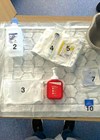Features
Intelligent triage: improving outpatient efficiency
Background Improving outpatient (OP) efficiency and service structure is of paramount importance as the NHS seeks to manage ever increasing demand in the wake of the COVID-19 pandemic. As we re-establish services and attempt to clear the backlog, new ways...
New study shows UK may finally be ready for prostate cancer screening
Prostate Cancer UK study shows tens of thousands fewer men each year face unnecessary harm thanks to new screening techniques. New research by Prostate Cancer UK shows that the UK may finally be in a position to roll out a...
My experience of addiction
In this incredibly honest and thought-provoking article, we hear from an anonymous doctor who has struggled with addiction. The nature of addiction is a subject of interest to a broad range of scientific disciplines, from medicine to psychology, psychotherapy and...
Frailty in urology – part 2
The first article in this series defined frailty and introduced the concept and importance of identifying patients living with frailty who undergo surgery, including those undergoing urological procedures. In the second part of this series we outline how to identify...
A report from the second laparoscopic urology workshop in Dakar, Senegal
Hôpital Général Idrissa Pouye (HOGIP), formerly Hôpital Général de Grand Yoff – HOGGY), in Dakar, Senegal, is one of the most well-regarded teaching hospitals in West Africa. It has over 300 beds, a urology team of six consultants and attracts...
The bulbocavernosus reflex
Despite its first discovery predating the early-1940s, clinical application of the bulbocavernosus reflex (BCR) has been limited to date. The BCR traditionally involves contraction of the bulbo- and ischiocavernosus pelvic floor muscles, often referred to as the ‘bulbocavernosus muscle’, in...
How the COVID pandemic has shaped ongoing service delivery at ERIC, The Children’s Bowel & Bladder Charity
- CHARITY FOCUS - Like many organisations and charities, COVID-19 generated a rapid period of adaptation and diversification for ERIC, The Children’s Bowel and Bladder Charity. Their Head of Communications, Alina Lynden, explains what this meant for the organisation and...
Practising surgery in a war zone: an interview with Dr Volodymyr Melnyk
It is now nine months since the full-scale Russian invasion of Ukraine commenced in late February 2022, with Putin announcing a “special military operation” to “denazify and demilitarise” Ukraine. The rest of the world, however, saw it for what it...
The Malcolm Coptcoat Travelling Fellowship Award
The Urology Foundation and The Malcolm Coptcoat Trust are pleased to announce the creation of The Malcolm Coptcoat Travelling Fellowship. The annual Fellowship will support travel to international centres of excellence for a period of four to six weeks to...
Movember addresses sexual health needs in prostate cancer patients
When Travis Garone and Luke Slattery met up in the Gypsy Bar in Melbourne for a quiet beer back in 2003 and came up with the idea for Movember, they could not have imagined what it would become and the...
The how, why and when of bladder washouts: a guide
Bladder washouts are a treatment usually employed by the urology team, more often in an inpatient setting, and commonly indicated for haematuria with clot retention and catheter bypassing [1,2]. Bladder washout is a cornerstone of treatment in urology wards, yet...
Sustainable healthcare: what steps can urologists take?
Human health is intrinsically linked to environmental health, making the ever-pressing climate crisis fundamentally a public health emergency. The healthcare sector is responsible for 8% of the UK’s greenhouse gas (GHG) emissions worldwide [1]. As the largest publicly funded healthcare...















